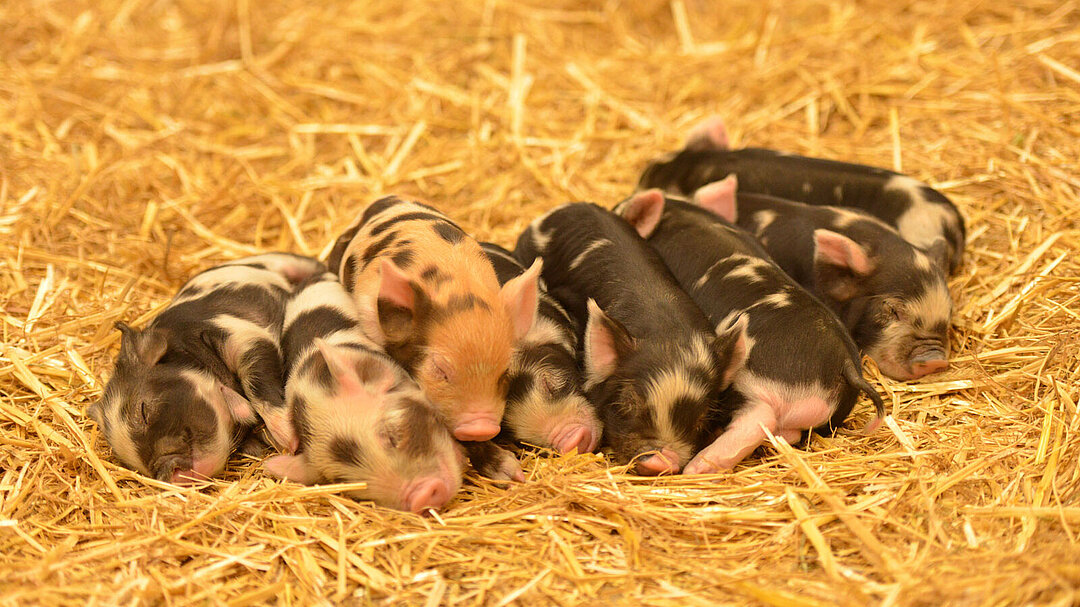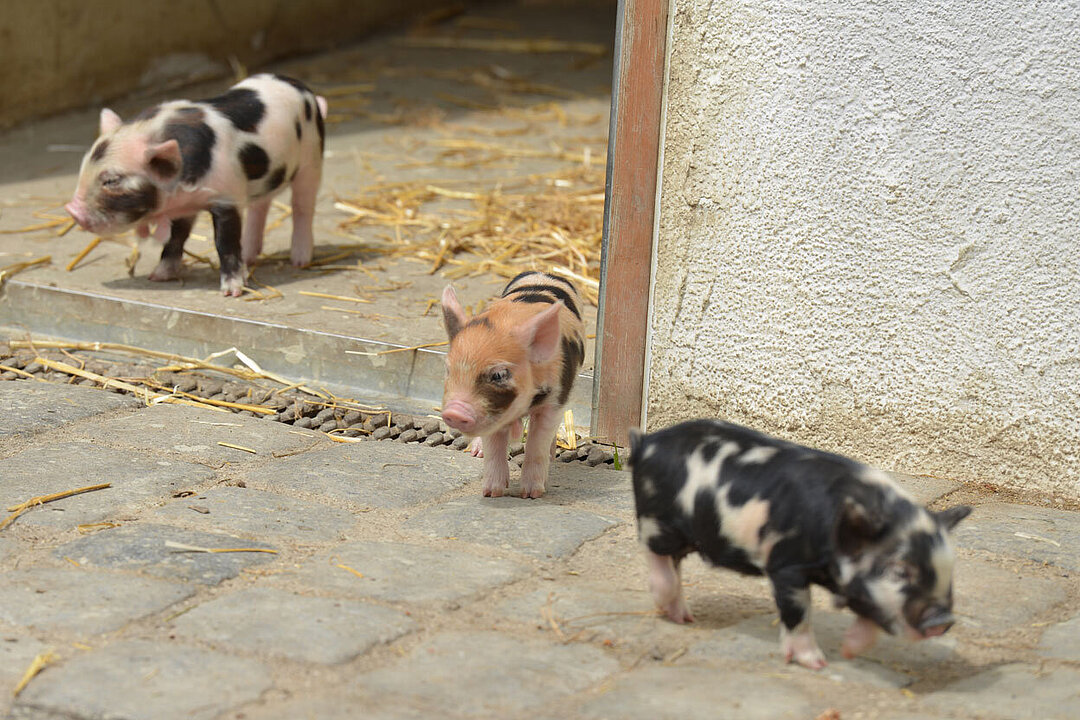
Hellabrunn Zoo has welcomed the arrival of a litter of Kunekune piglets.
Mum, Frieda, gave birth to a whooping eight offspring in her enclosure in the Mühlendorf village. A preliminary check by the animal care team determined the gender makeup of the litter: the newborns comprise four males and four females, weighing between one and two kilos. Visitors can look forward to meeting the adorable piglets on a tour of the Mühlendorf. After a gestation period of about three months, three weeks and three days, Frieda gave birth to octuplets at the end of April. Both the mum and her young are healthy and getting along well together. They spend their days moving freely between the barn and the outdoor enclosure, with the little ones becoming more and more curious with each passing day. The little piglets become more active every day and curiously inspect the barn, the outdoor area and of course the playfulness of their siblings. A Kunekune litter usually consists of three to seven piglets.
Fat and round: a rare breed from New Zealand
Kunekune pigs originally come from Asia and were probably introduced to New Zealand by merchants in the early 19th century. The small domestic pigs were kept almost exclusively by the Maori people, until the species was rediscovered in the 1970s – on the brink of extinction. A conservation breeding programme was subsequently launched with the 18 remaining individuals. Since 2018, Hellabrunn Zoo has been actively involved in continuing these conservation efforts.
Kunekune means "fat and round" in Māori, the language of the indigenous people of New Zealand. The species has long, soft, and very dense bristles and comes in variety of colours. Adults can weigh up to 100 kilos. Kunekune are very docile and friendly grazing animals. Today, they can be found in many zoos and are also kept privately as pets.
"We are delighted to welcome this litter, which represents the third time our Kunekune pigs have given birth to multiple young,“ says zoo director Rasem Baban. "Since we opened the Mühlendorf village, the pigs have been a firm favourite with our visitors. Depending on the weather, visitors can now meet the eight piglets in the outdoor enclosure or in Kunekune barn.”
Conservation of rare breeds in Mühlendorf village
Since opening in 2018, the Mühlendorf village has been the main attraction of the Europe geozone at Hellabrunn Zoo. This area of the park has been designed to replicate an Alpine village, offering visitors an opportunity to get to know native, but also endangered breeds of domestic animals, and to learn more about the development of complex ecosystems. Dirt roads, rustic fences, barns and a cottage garden make the village atmosphere complete. Visitors can also discover fascinating facts about domestic and livestock breeds in Europe at the interactive learning stations. In addition to the Kunekune pigs, other zoo village residents include Appenzeller Spitzhauben, geese, Murnau-Werdenfels cattle, Shetland ponies, guinea pigs and various native fish and amphibian species – there’s plenty to discover for all ages.
The Kunekune piglets are not the only newborns at the zoo. Other animals that have recently given birth include the Java bantengs, red kangaroos, greater kudus, agile wallabies, dama gazelles and Humboldt penguins. Like every spring, there are many adorable two-legged and four-legged reasons for a visit to Hellabrunn Zoo.
